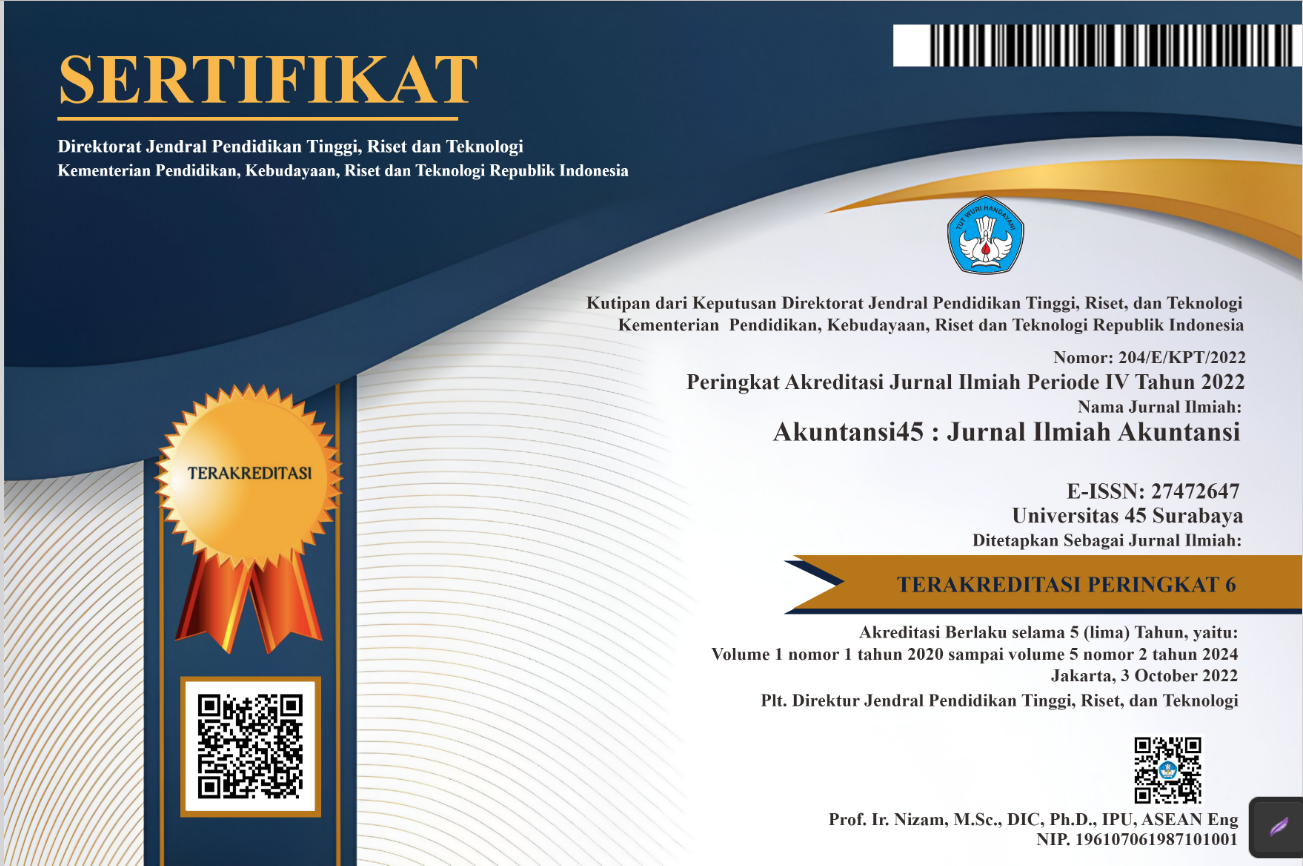Ukuran Perusahaan Pada Kualitas Laporan Keberlanjutan Perusahaan Sektor Energi di Indonesia Dengan Harga Saham Sebagai Moderasi
DOI:
https://doi.org/10.30640/akuntansi45.v6i1.4402Keywords:
company size, sustainability report quality, stock price, stakeholder theory, energy companiesAbstract
This study aims to examine the effect of company size on the quality of sustainability reports in energy sector companies listed on the Indonesia Stock Exchange (IDX), and to analyze the role of stock prices as a moderating variable in this relationship. The theory used as the main basis is stakeholder theory, which states that companies have a responsibility to disclose sustainability information in order to meet stakeholder expectations. This study uses a quantitative approach with the Moderated Regression Analysis (MRA) method. The research sample was selected by purposive sampling in energy sector companies that published sustainability reports and financial reports in the period 2021–2023. Company size is measured by the natural logarithm of total assets, sustainability report quality is measured by the disclosure score using the GRI standard, while stock price is measured by the natural logarithm of the year-end closing price. The results show that company size has a positive effect on the quality of sustainability reports, and stock price significantly strengthens the relationship. These findings support stakeholder theory, that larger companies with high market value tend to provide greater transparency to stakeholders through better quality sustainability reporting.
References
Cormier, D., & Magnan, M. (2007). The relevance of environmental disclosure for investors and other stakeholder groups: What we know and what we need to know. Business Strategy and the Environment, 16(7), 421–433. https://doi.org/10.1002/bse.211
Friedman, M. (1970, September 13). The social responsibility of business is to increase its profits. The New York Times Magazine.
Ghozali, I., & Chariri, A. (2017). Teori akuntansi (7th ed.). Badan Penerbit Universitas Diponegoro.
Global Reporting Initiative. (2021). GRI standards. https://www.globalreporting.org
Hermawan, M., Mulyawan, M., & Gunardi, A. (2019). Does firm size matter for sustainability disclosure? International Journal of Energy Economics and Policy, 9(5), 486–493.
Ioannou, I., & Serafeim, G. (2017). The consequences of mandatory corporate sustainability reporting. Harvard Business School Research Working Paper No. 11-100. https://doi.org/10.2139/ssrn.1799589
Jensen, M. C. (2001). Value maximization, stakeholder theory, and the corporate objective function. Journal of Applied Corporate Finance, 14(3), 8–21. https://doi.org/10.1111/j.1745-6622.2001.tb00434.x
Khan, M., Serafeim, G., & Yoon, A. (2016). Corporate sustainability: First evidence on materiality. The Accounting Review, 91(6), 1697–1724. https://doi.org/10.2308/accr-51383
Liu, Q., Luo, L., & Cai, Y. (2021). Market reaction to sustainability reporting: Evidence from emerging markets. Journal of Cleaner Production, 278, 123882. https://doi.org/10.1016/j.jclepro.2020.123882
Rahayu, S., & Sucahyo, E. (2021). Pengaruh ukuran perusahaan dan profitabilitas terhadap kualitas laporan keberlanjutan. Jurnal Akuntansi Multiparadigma, 12(3), 472–489. https://doi.org/10.18202/jamal.2021.12.3024
Downloads
Published
How to Cite
Issue
Section
License
Copyright (c) 2025 AKUNTANSI 45

This work is licensed under a Creative Commons Attribution-ShareAlike 4.0 International License.









